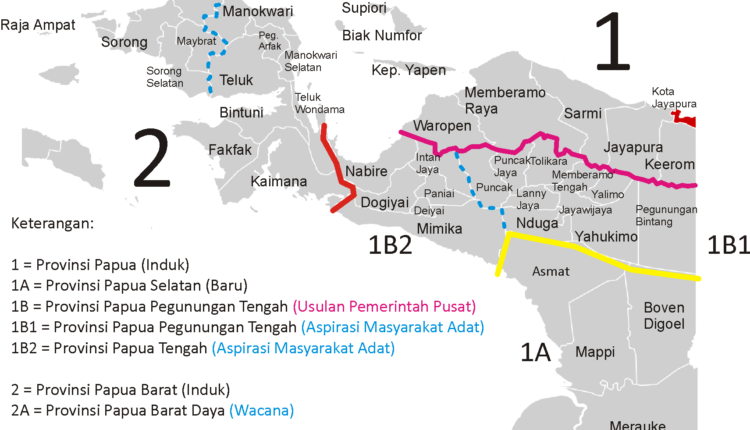The Expansion of the Papua Region, the Right Strategy for Accelerating Development
By: Alfonso Lokbere)*
The expansion of the Papua region is an accurate strategy in accelerating development. With this policy, a lot of infrastructure will be built and accelerate modernity in Papua.
The addition of a province, aka regional expansion, is a big plan for the Papuan regional government. The reason is, with such a large area (more than 4,000 hectares), having 2 provinces would be too difficult. The reason is because if the area is too large, the APBD that is given will be divided and become very little per city, so that development there is not fast enough.
Therefore, regional expansion is a solution, so that the allocated APBD funds can be focused on each province. The plan is to have additional provinces, namely South Papua Province, Central Mountains Papua Province, and Tabi Saireri Province, so that there are a total of 5 provinces in the Earth of Cendrawasih region.
Vice President KH Ma’ruf Amin stated that the expansion of the Papua region was a strategy to accelerate development. If there is expansion, infrastructure will be built, including government and security infrastructure.
In a sense, when there is an expansion of the region and the status of a new province, a new governorate will automatically be built. When there is such a building, it is followed by the construction of other buildings such as the provincial government office, police station and TNI headquarters. All are built for development because they serve the people.
Another infrastructure built in the new province is a representative school building so that Papuan children can study there, without having to go all the way to another province. If people study diligently, they will automatically become smarter and development in the human resources sector will occur. With a higher diploma it will be easier to get a job.
In addition to schools, other infrastructure built is bridges, roads, and others. The connecting roads between provinces will be paved and will facilitate the mobility of the Papuan people, and shorten the time for those who want to go to other districts. They no longer need to cross the path on foot.
If there is a bridge in the new province, in addition to facilitating mobility, it is also beneficial in the tourism sector. An example is the Youtefa Bridge which was built several years ago, and has become a favorite tourist attraction. With the construction of the bridge, it can increase the people’s economy because it will be crowded with visitors from the region, even other countries.
When there is a new highway, economic development will occur because the mobility of trucks or other vehicles carrying merchandise will be smoother. They can send groceries and other necessities by road so they don’t have to depend on shipping by air (because before, road was really bad). As a result, the price of finished goods decreases because the cost of shipping via land is cheaper.
Therefore, the expansion of the Papua region is highly supported, not only by the central and regional governments, but also by civil society. They are happy because if there is a new province, new buildings will be built as well. The goal is not to show off but to advance the Papuan people.
Regional expansion that accelerates development is one of the approaches to the Papuan people, namely the welfare approach. It is hoped that with the many developments and the people who are increasingly prosperous, a harmonious relationship will be created.
Development in Papua as a result of regional expansion has a legal umbrella, namely the Special Autonomy Law. The implementation of development is not only for collecting high-rise buildings, but also for the prosperity of Papuans. With the rapid development, their standard of living will be more advanced and their mobility will also be smooth.
)* The author is a Papuan student living in Bandung
